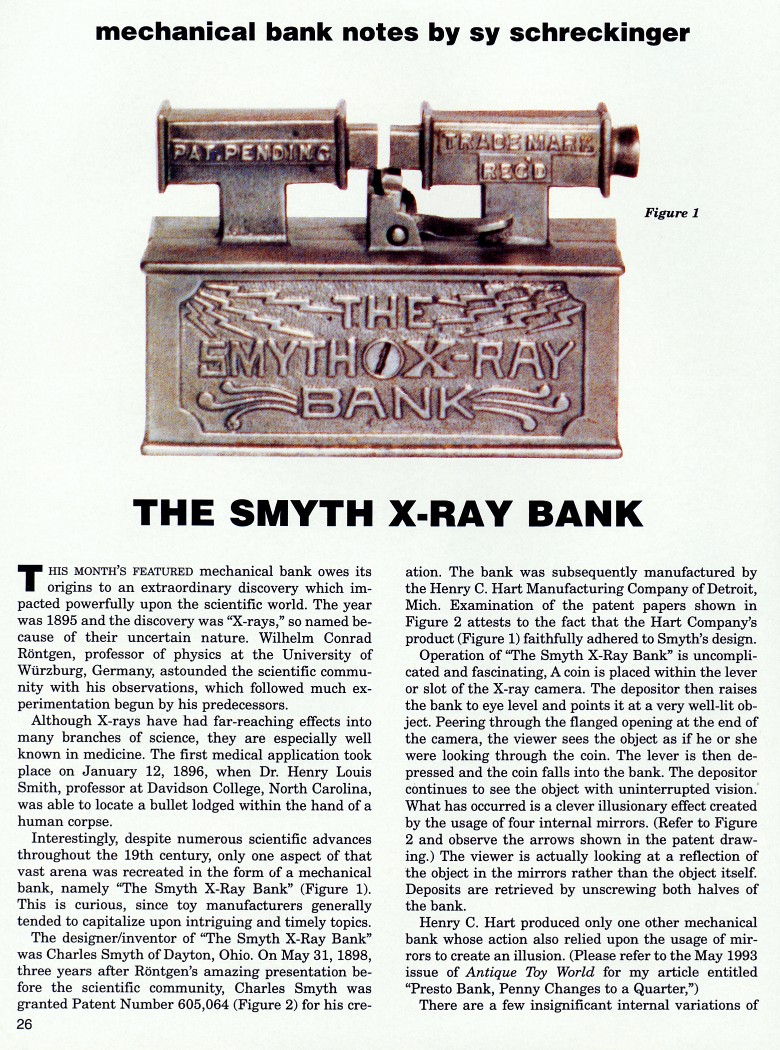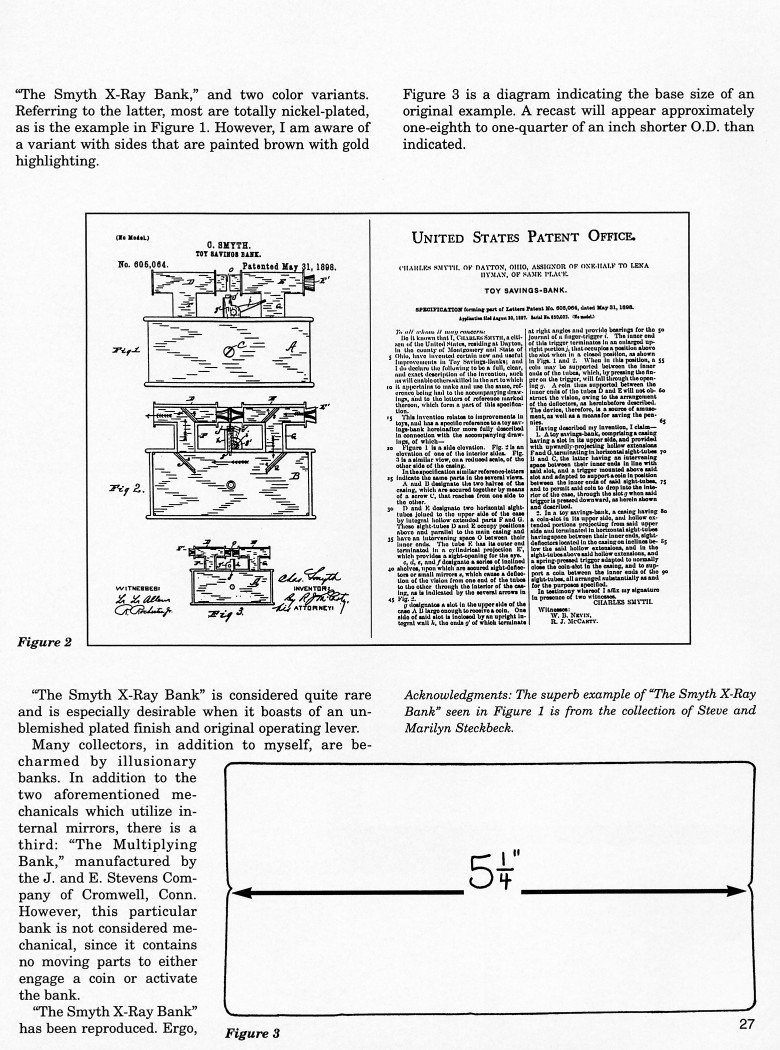|
The Smyth X-Ray Bank
by Sy Schreckinger – ANTIQUE TOY WORLD Magazine – September,
1997
This month’s featured mechanical bank owes its
origins to an extraordinary discovery which impacted powerfully upon the
scientific world. The year was 1895 and the discovery was "X-rays," so
named because of their uncertain nature. Wilhelm Conrad Röntgen, professor
of physics at the University of Wurzburg, Germany, astounded the
scientific community with his observations, which followed much
experimentation begun by his predecessors.
Although X-rays have had far-reaching effects into many branches of
science, they are especially well known in medicine. The first medical
application took place on January 12, 1896, when Dr. Henry Louis Smith,
professor at Davidson College, North Carolina, was able to locate a bullet
lodged within the hand of a human corpse.
Interestingly, despite numerous scientific advances throughout the
19th century, only one aspect of that vast arena was recreated in the form
of a mechanical bank, namely "The Smyth X-Ray Bank" (Figure 1). This is
curious, since toy manufacturers generally tended to capitalize upon
intriguing and timely topics. The designer/inventor of "The Smyth X-Ray
Bank" was Charles Smyth of Dayton, Ohio. On May 31, 1898, three years
after Rontgen's amazing presentation before the scientific community,
Charles Smyth was granted Patent Number
605,064 (Figure 2) for his
creation. The bank was subsequently manufactured by the Henry C. Hart
Manufacturing Company of Detroit, Mich. Examination of the patent papers
shown in Figure 2 attests to the fact that the Hart Company's product
(Figure 1) faithfully adhered to Smyth's design.
Operation of "The Smyth X-Ray Bank" is uncomplicated and fascinating,
A coin is placed within the lever or slot of the X-ray camera. The
depositor then raises the bank to eye level and points it at a very
well-lit object. Peering through the flanged opening at the end of the
camera, the viewer sees the object as if he or she were looking through
the coin. The lever is then depressed and the coin falls into the bank.
The depositor continues to see the object with uninterrupted vision. What
has occurred is a clever illusionary effect created by the usage of four
internal mirrors. (Refer to Figure 2 and observe the arrows shown in the
patent drawing.) The viewer is actually looking at a reflection of the
object in the mirrors rather than the object itself. Deposits are
retrieved by unscrewing both halves of the bank.
Henry C. Hart produced only one other mechanical bank whose action
also relied upon the usage of mirrors to create an illusion. (Please refer
to the May 1993 issue of Antique Toy World for my article entitled "Presto
Bank, Penny Changes to a Quarter,")
There are a few insignificant internal variations of "The Smyth X-Ray
Bank," and two color variants. Referring to the latter, most are totally
nickel-plated, as is the example in Figure I. However, I am aware of a
variant with sides that are painted brown with gold highlighting.
"The Smyth X-Ray Bank" is considered quite rare and is especially
desirable when it boasts of an unblemished plated finish and original
operating lever.
Many collectors, in addition to myself, are becharmed by illusionary
banks. In addition to the two aforementioned mechanicals which utilize
internal mirrors, there is a third: "The Multiplying Bank," manufactured
by the J. and E. Stevens Company of Cromwell, Conn. However, this
particular bank is not considered mechanical, since it contains no moving
parts to either engage a coin or activate the bank.
"The Smyth X-Ray Bank" has been reproduced. Ergo, Figure 3 is a
diagram indicating the base size of an original example. A recast will
appear approximately one-eighth to one-quarter of an inch shorter O.D.
than indicated.
Acknowledgments: The superb example of "The Smyth X-Ray Bank" seen in
Figure 1 is from the collection of Steve and Marilyn Steckbeck.
|


